12 Nov 2020
Interview
When Monika Czyżyk built a rocket: on bamboo, synchronicity, and subconscious memories
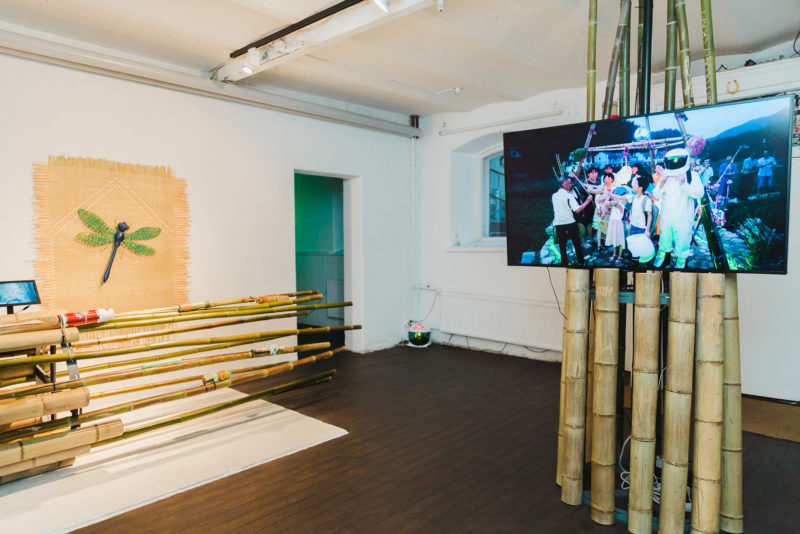
Installation view Bamboocene: Memories of Synchronicity, 2020. Myymälä2 gallery. Photo: Laura Mainiemi.
Monika Czyżyk spent 3 months in China between April and July 2020 on residency at the Institute for Provocation, a studio art residency located in Beijing. It was not her first time in China, but a residency is different to just visiting; a residency gives a legitimate reason to do things and get involved in various aspects of local life.
As soon as Monika arrived in Beijing she met Hu Wenna, an urban planner who works with revitalisation of villages at China Academy of Urban Planning and Design – CAUPD. She invited Monika to visit Anhui province in order to experience life in traditional Chinese villages. Monika was welcomed by social worker Wang Zheng, who introduced her to local people in Shangcun and Wanjian villages. It was a busy time with many revitalisation projects taking place. Monika witnessed coffee workshops and was welcomed to document them. Filming was a means of communication between Monika and the local people, with the camera acting as a very natural, kind communication tool.
As CAUPD was interested in the presence of artists in the village, Monika proposed a process of building an outdoor bamboo rocket sculpture together with the local community, which initiated a process of performances, workshops, sharing knowledge and learning from one another.
While working with bamboo, Monika discovered that bamboo plants flower at the same time all over the world if they are derived from the same mother plant, regardless of geographical location or climate. It was a magical thought, Monika found, that showed her how amazing the bamboo plant really is. The unique flowering impressed her so much that this moment of synchronicity is also featured in the documentary film about rocket-building.
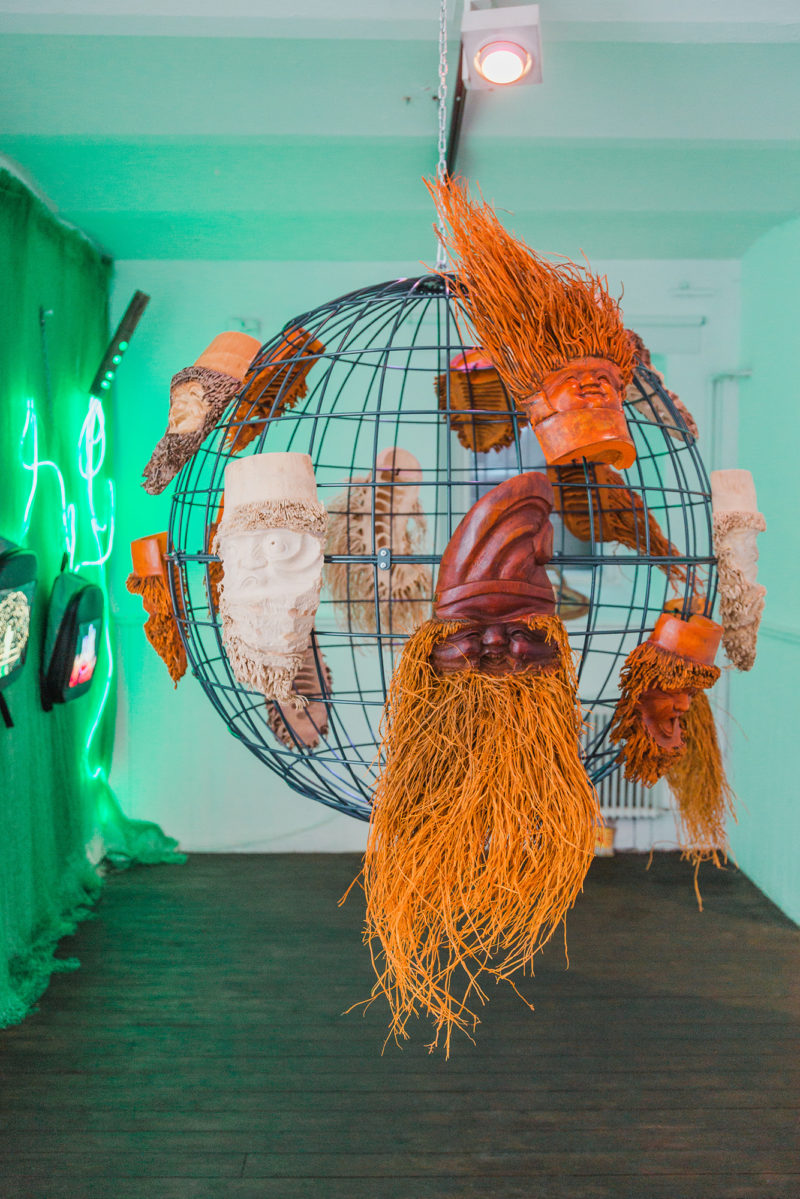
Installation view Bamboocene: Memories of Synchronicity, 2020. Myymälä2 gallery. Photo: Laura Mainiemi.
The resulting documentary film, I Want to Build a Rocket, has been displayed together with various mixed-media sculptures such as bamboo root masks which hang on a metal globe made by Monika’s father, clusters of wood that were used to build the rockets (with the help of the Finnish Astronautical Society), red Finnish thermoses that were referenced during filming, sculptures of dragonflies, green mesh, and led lights.
Currently, Monika is showing the work in an exhibition curated by Kathryn Zazenski for Stroboskop Art Space in Warsaw, Poland, until the end of November. The work is a variation of an exhibition she put on at Myymälä2 gallery in Helsinki. In Poland, Monika is showing one additional work: a banner featuring a composition of a print of two condiments, Majonez Kielecki from her hometown in Poland and a well-recognized condiment from China. The banner combines memories with local products, while the composition has been arranged to represent the Polish flag. Patterns of behaviour come from subconscious memories, for people just like bamboo plants. The banner contextualises and introduces the objects – in this case the condiment jars – while touching on another similarity between Poland and China: in both countries the communist and post-communist times are visible, with different eras and different styles being present in the architecture of the cities.
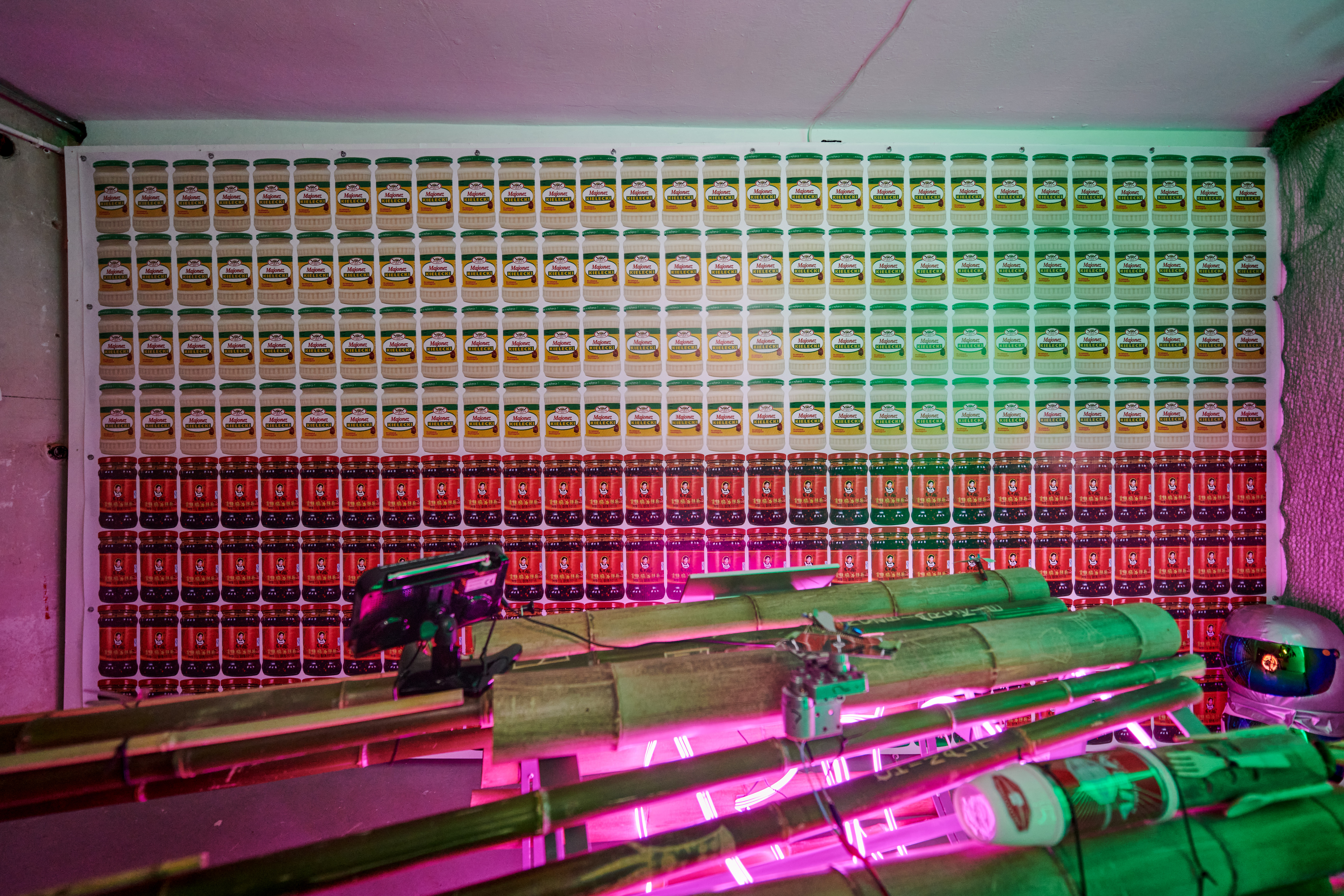
Bamboocene: Memories of Synchronicity (Polish Flag), 2020, banner print,, 432 x 220 x 0,5 cm. Stroboskop Art Space. Photo: Bartosz Zalewski.
Monika very much enjoyed putting on an exhibition in Poland and felt very inspired. She feels the artistic community is very strong, with artists all helping each other, arranging things on their own, and communicating. Working in Poland for some time is something Monika feels could be on the cards in the future.
In the nearby future, Monika would like to continue working on the film, making a condensed screening version of it. She is also going to continue working on a finalized version of a collaborative catalogue, the prototype for which was exhibited alongside her film and sculptural works in Myymälä2 gallery in September 2020. In addition, she will return to an ongoing project from 2016, in which she addresses issues of body, gender, and learning, through Barbie-dolls and videos of her female friends telling stories about their lives. She is also planning a new documentary film situated in various allotment gardens in Poland and Finland.
But first, she will take a much-needed break.
(The interview continues after the image.)
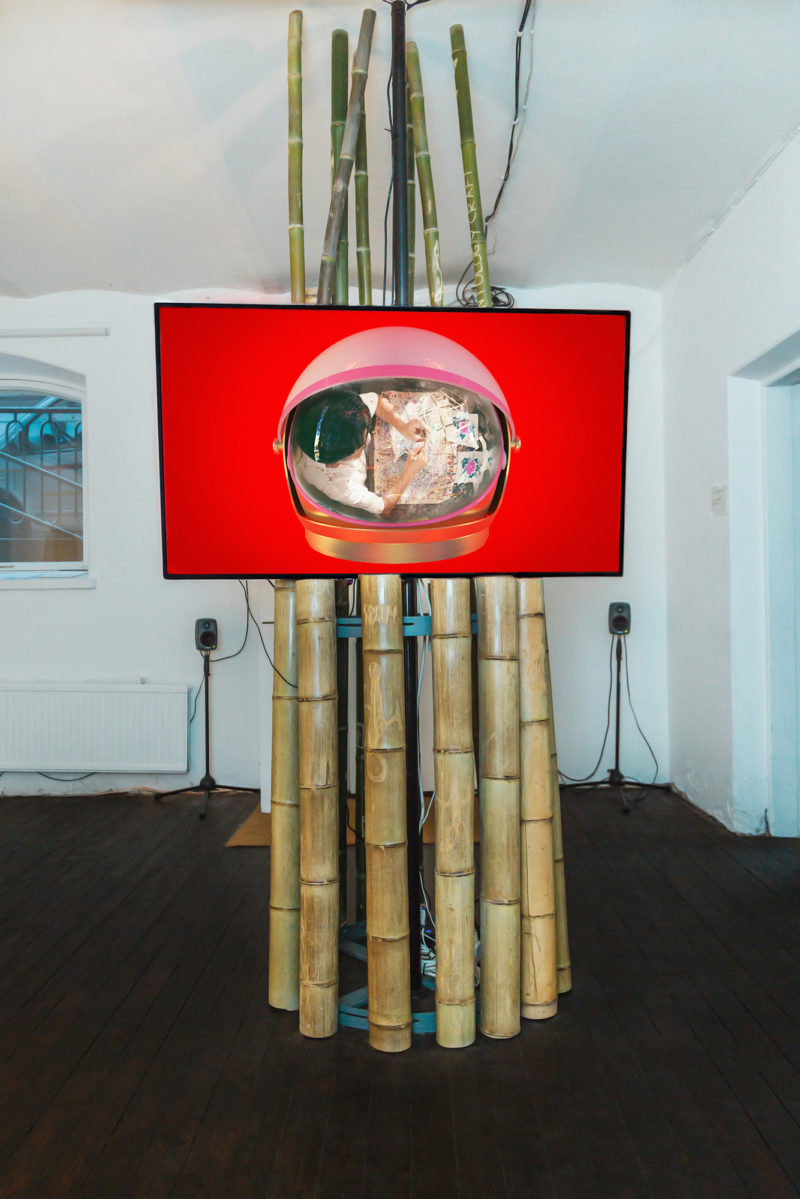
Monika Czyżyk, Geographies of a lonely Pole (I want to build a rocket), 2020, 4K UHD video, 82 min 48 s, color, stereo sound, 55” screen, auto pole mounting, bamboo poles with carved drawings by Torsten Zenas Burns mounted on steel hoop rack, 286 x 60 x 70 cm. Myymälä2 gallery. Photo: Laura Mainiemi.
AA: You have recently been traveling around the world, getting to know the area and the local people, and documenting stories. Is your work fiction, travelogue, or documentary?
MC: I often mix documentary interviews with staged scenes. A kind of participatory docu-fiction is often created blurring the research and adding new elements the meaning of which is not entirely clear until the final montage. I think this genre relates to my understanding of the world and creation of art works in general.
Every project I have participated in or activated is very different and based on a specific context and collaboration. There is a notion of a documentary filmmaker in my practice, I react to my surroundings, situations and people I am in contact with. I am always capturing moving image files with a digital camera. I mostly work in local contexts, creating collaborative situations with others to develop community-based performances, stories and acts with co-created fictional elements that combine the shared documented experiences of the participants.
Over the years I have participated in different global residency programs. Usually I enter the new space with some initial thoughts and ideas, often looking for collaborators or participants involved in a local workshop, screening, or other similar situation. I have been lucky to meet really fantastic people during these encounters. Once the energy and motivations are right, I dedicate my time to focus on work in a very specific place and community and often these projects are developed over many years. That’s how I began to work on projects with Footprints of David, a performance group based in the Bariga area of Lagos, Nigeria and with local residents located in Anhui province, China.
AA: What interests you most in experiencing a new culture, and what have you gained the most from past travels?
MC: I sense the romantic image of a traveler in this question.
I am actually not sure how to answer this question. What interests me is the unknown, the unpredictable, thecoincidental, the intuitive, the hospitable, the risk, the trust, the sharable, the memorable, the smiles, the smells. There are so many different styles of travel.
I think I have been always questioning my identity and my belonging to a certain place. The necessity of the escape is my inner drive. All experiences are shaping who we are. I have gained knowledge, experiences, memories, friends, proof that the Earth is not flat.
Being born in 1989 and raised in Poland during some very politically transformative years I think my father implemented the ideas of adventure and exploration in me. I have a genuine interest in meeting people with different backgrounds than myself.
AA: Some of your films and installations evoke images of science fiction and awe. What inspires you?
MC: I would actually say that my main interests are in the realm of docu-fiction and experimental video art. I have been truly inspired by Leslie Thornton’s media works, especially her ongoing Peggy and Fred series, and artist and filmmaker Melanie Bonajo. I also have had the opportunity of seeing in person several films and installations by the outstanding Michel Auder. As far as inspiring and thought provoking conversations goes, I have had the fortune of conversing with the visual artist and theorist Thomas Zummer. Other important filmmakers that continue to inspire me over the years are the films of Agnes Varda and Jean Luc Godard. Another area of inspiration for me exists in global techno culture and dancing.
AA: There’s a sense of optimism and beauty to a lot of your sci-fi work. How do you see the future?
MC: Science fiction for me is a tool to engage the present. Speculative themes are explored in many of the video pieces and often shown through ambiguous performance rituals or through animations that explore new states of being. I enjoy working with technical collaborators coming up with both virtual and physical places, costumes and scenes that may or may not exist in some new reality. I am cautiouslly optimistic about the future transforming through culture. Although observing recent global events, I would need to find some special powers to keep that optimism going.
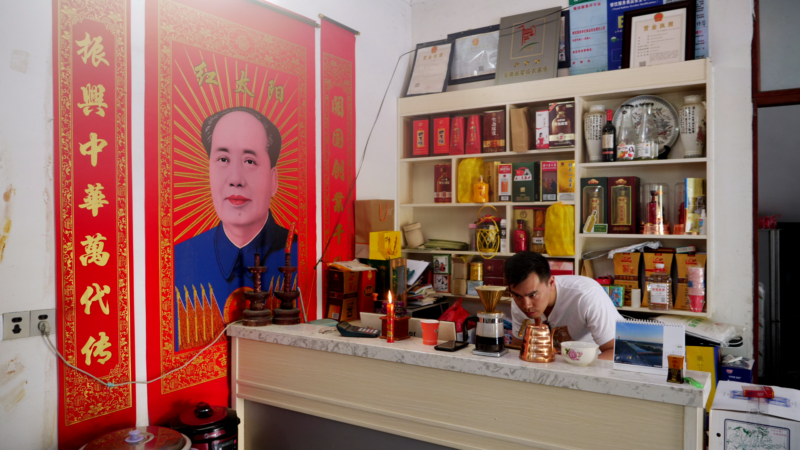
Still from the documentary film I Want to Build a Rocket, 2020.
AA: You are interested in events that occur simultaneously. Do you have any personal theory about how these coincidences occur?
MC: I guess I would like to believe in some kind of connectivity between humans, time and places we have lived in. It’s a desire to be in multiple places simultaneously. Adesire of sharing a level of understanding that goes beyond national, historical, cultural and spiritual contexts and differences. I would like to think that synchronicity and serendipity are embedded in a cosmic blueprint. Being lost in any artistic project is one way to enter. Stay open! Don’t always have a plan! Open perfect.
AA: You touch upon the subject of “the unique bamboo flowering which happens at the same time all over the world irrespective of their geographical location and climate as long as they were derived from the same mother plant”. Did you purposefully want to address issues of cultural identity and belonging?
MC: I definitely question issues related to identity and belonging. As our subjectivity is built up on certain grounds, we have the necessity to question, destroy, reinvent and destabilise, now more than ever. In my film, while recording scenes of Chinese revitalization I was sensitive to the saying ‘przepis na zachod’ (recipe for Westernization) taking root. I was also thinking about this in the context of my family and Poland in the 1980’s.
AA: You collaborate often with Torsten Zenas Burns. How did your paths and intentions cross?
MC: In 2015, we met at UnionDocs in Brooklyn, NY. while I was participating in a video screening. Over the next few months we started our ongoing series of video and performance works called Monstersweet in New York City, Helsinki and at a residency program called Signal Culture. We actually just finished the latest version which was recently shown in MUU gallery in September. It’s very exciting to collaborate with Torsten. We naturally combine our skills and research interests. Torsten’s usage of performance art and playfulness with analog transformations of the moving image goes in pair and enriches my documentarian and archival moving image working process. As a result, we often produce media works in a genre of docu-fiction with influences from global speculative fictions. Currently we are collaborating on electronic publishing projects related to my residency experience in China.
AA: Can you offer us a glimpse into what’s coming next?
MC: Like everybody on the planet, I am hoping a vaccine is developed and travel opportunities can resume. I am really looking forward one day to returning to China’s Anhui province and visiting all the amazing participants and collaborators that helped make my new film. They have not seen it yet and I would like to screen it for them. I also had a connection with a Chinese art publishing group based in Beijing, in the same building as the IFP residency program I went to. I am really excited to collaborate with them creating new exhibition, film and graphic novel catalogues for distribution in art international book fairs in the coming years.
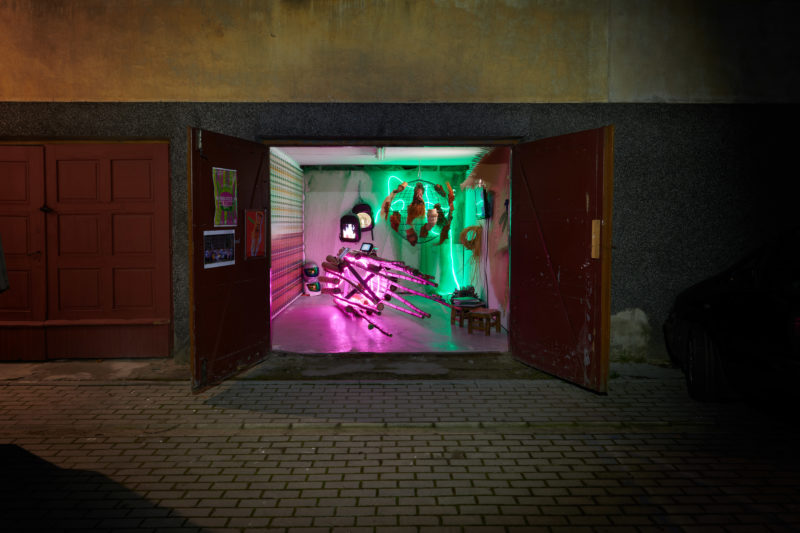
Installation view Bamboocene: Memories of Synchronicity and Geographies of a Lonely Pole, 2020. Stroboskop Art Space. Photo: Bartosz Zalewski.
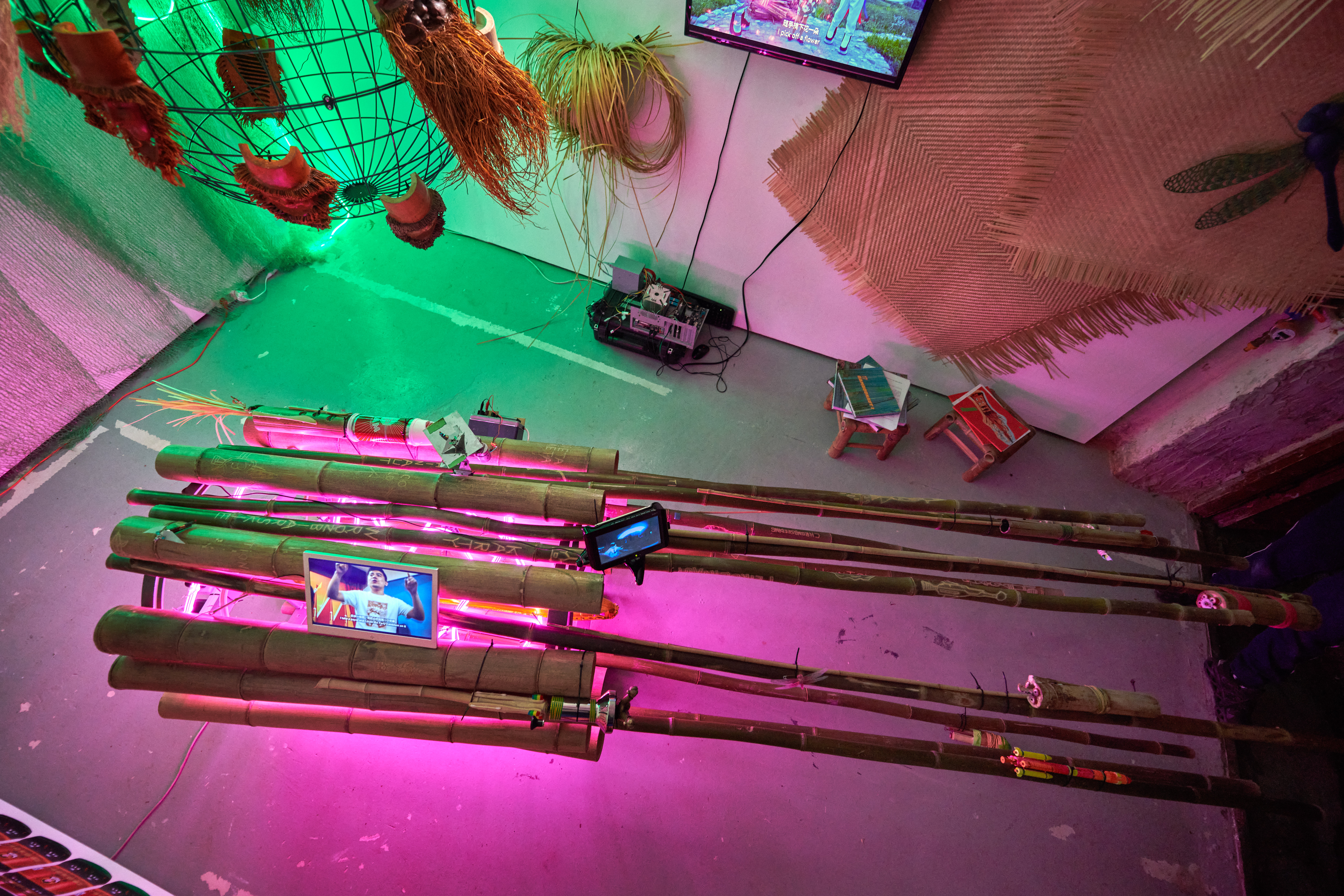
Monika Czyżyk and Torsten Zenas Burns, Geographies of a lonely Pole (Cluster), 2020, 24 bamboo poles mounted on steel hoop rack, screws, zip ties, threads, 10” screen, 12VDC motor, bamboo cotton swabs, bamboo cutlery set, thermos, coffee grinder, green mesh, capacitors, USB connectors, trimmer, 232 chip, socket rails with flat cables, 286 x Ø 70 cm. Stroboskop Art Space. Photo: Bartosz Zalewski.
The residency and related projects were kindly supported by The Finnish Cultural Foundation, Kone Foundation, Academy of Urban Planning and Design – CAUPD, and Wanjian village.
Finnish Cultural Foundation’s residency programme is maintained and developed in collaboration with HIAP – Helsinki International Artist Programme.
Photos provided by the artist.
Read more:
